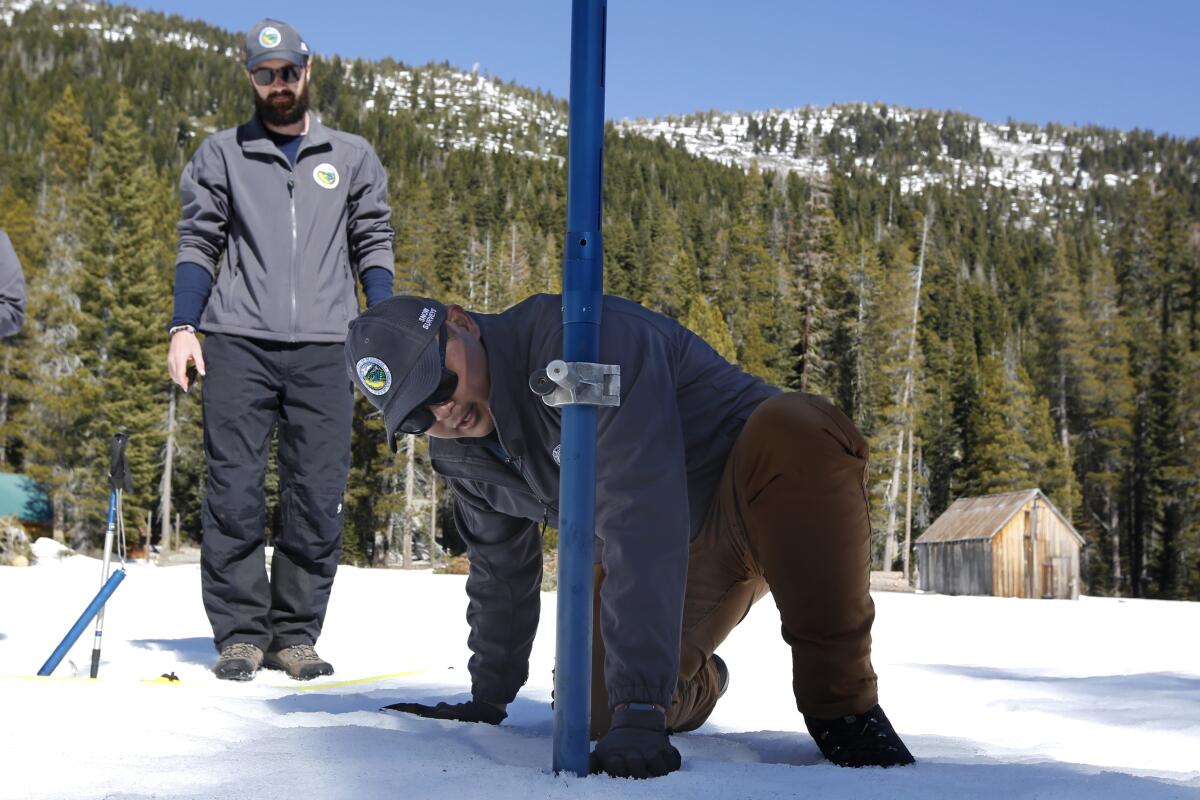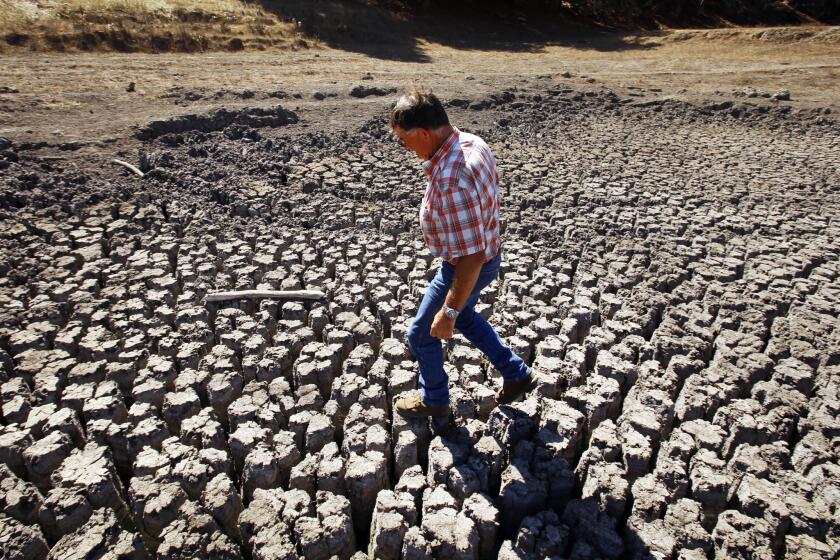California snowpack depleted amid what could be a record-dry February

A dry February continues to take its toll on California’s dwindling snowpack, officials reported Thursday.
The pack in the Northern California resort town of Phillips measured just 47% of average, down significantly from last month’s measurement.
Despite the lower number, water officials say it’s not cause for too much alarm — yet.
Surveyors with the California Department of Water Resources trekked through the snow at the El Dorado County measuring station to take the third seasonal measurement, which serves as an important marker for the state’s water supply.
The result — a depth of 29 inches — marks a decline of about 11.5 inches from the last measurement. If all the snow were to melt at once, it would amount to about 11.5 inches of water, said Sean de Guzman, chief of the agency’s snow surveys and water supply forecasting section.
Warmer winter temperatures and lackluster rainfall in January and February are to blame for the snowpack’s reduction. This month is poised to become the driest February in the northern Sierra Nevada on record, dating to 1921. There has been no measurable rainfall in the area this month, De Guzman said.
Rainfall has been below average for 14 of the last 21 years in downtown Los Angeles
“February rain and snow were quite disappointing, and we didn’t quite get the results we’d hoped for, so we’ll most likely end this water year below average,” he said. “We just don’t know how far below.”
The snow season typically begins in December and ends on the first day of April, when the snowpack is normally at its highest. However, surveyors will continue to measure the pack as long as there’s snow on the ground, often through May. How much snow falls during this period is crucial to California’s annual water outlook and is watched closely by state water managers. Thursday’s reading at the Phillips station was 46% of the April 1 average for that location.
The snowpack provides about 30% of the annual freshwater supply for the state. Its spring and summer runoff feeds rivers and reservoirs, and part of it is distributed to water agencies for farm irrigation, landscaping and urban drinking supplies.
The good news, officials say, is that the state’s reservoir storage is about 104% for this time of year, thanks in part to solid rainfall last winter and chilly spring temperatures last year that kept snow around into the summer.
Local officials in Silicon Valley are at odds over a federal agency’s demand that a key reservoir be drained quickly for earthquake retrofits.
That 2019 snowpack — which picked up later in the winter, boosted by a series of atmospheric rivers paired with cold fronts that pounded the state — was ultimately the fifth best in recorded history. That has given the state some cushion this year, officials said.
“A few dry months doesn’t really make a drought,” said Chris Orrock, spokesman for the Department of Water Resources. He added that two consecutive dry years, however, could start to affect the state’s water supply.
Still, nearly 70% of the state, including much of the Central Coast and Los Angeles County, is considered to be abnormally dry. About 23% of the state, including large swaths of the San Joaquin Valley and portions of the Sierra Nevada home to about 5.9 million people, is considered to be in moderate drought conditions, according to maps released Thursday by the U.S. Drought Monitor.
Forecasters and water managers keeping a close eye on precipitation and the resulting snowpack may find a reprieve if rainfall ramps up in March, a phenomenon known by weather experts as “miracle March.” But a wet March is far from a certainty.
Of the six driest Februaries on record, three were followed by a dry March and three were followed by a March that had above average rainfall, Orrock said.
“We’ll just have to wait and see what next month brings,” he said.
More to Read
Start your day right
Sign up for Essential California for news, features and recommendations from the L.A. Times and beyond in your inbox six days a week.
You may occasionally receive promotional content from the Los Angeles Times.








